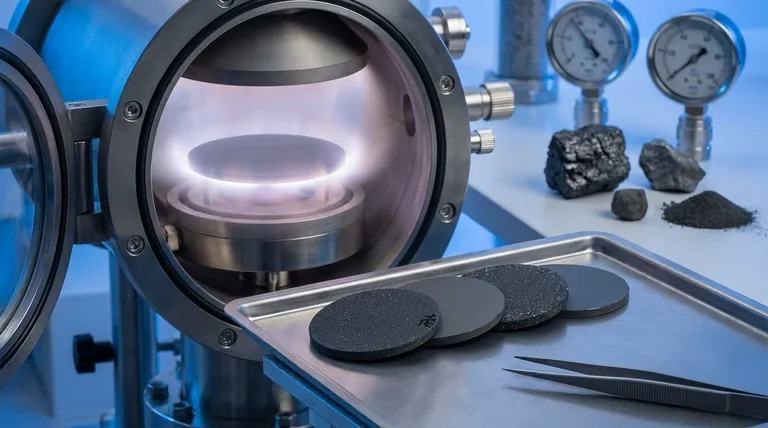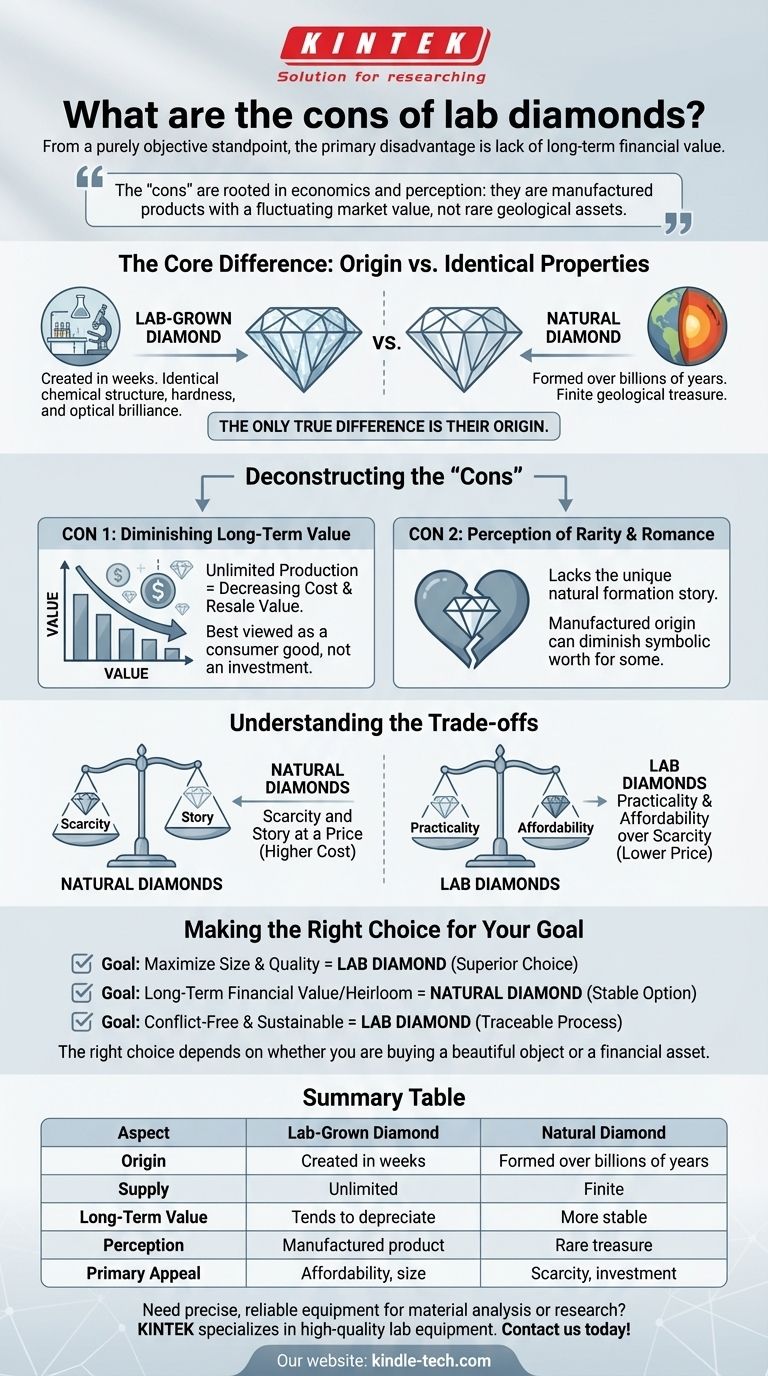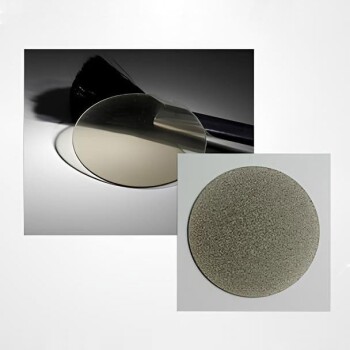From a purely objective standpoint, the primary disadvantage of a lab-grown diamond is its lack of long-term financial value. Because they can be produced without limit, their prices are subject to market competition and technological advancements, preventing them from serving as a stable store of value in the way a scarce, natural diamond traditionally has.
The core issue with lab diamonds isn't a flaw in their quality—they are physically and optically identical to natural diamonds. Instead, the "cons" are rooted in economics and perception: they are manufactured products with a fluctuating market value, not rare geological assets.

The Core Difference: Origin vs. Identical Properties
To understand the disadvantages, it's crucial to first accept a fundamental truth: a lab diamond is a real diamond. The cons are not about the stone itself, but about its context in the market.
Identical in Every Physical Way
Lab-grown diamonds are not "fakes." They possess the same chemical structure, physical hardness, and optical brilliance as diamonds mined from the earth.
They are made of the same tightly-bonded carbon atoms and interact with light in the exact same way. To the naked eye, and even under most jewelers' loupes, they are indistinguishable.
The Deciding Factor: The Creation Story
The only true difference lies in their origin. Natural diamonds formed over billions of years deep within the Earth's mantle, making them a finite, geological treasure.
Lab diamonds are created in a controlled environment over a matter of weeks. This distinction between a "found" object of rarity and a "made" object of technology is the source of all its perceived disadvantages.
Deconstructing the "Cons" of Lab-Grown Diamonds
The drawbacks of choosing a lab diamond are almost entirely related to value and market perception, not the quality or beauty of the stone.
Con 1: Diminishing Long-Term Value
This is the most significant disadvantage. The supply of natural diamonds is finite and controlled, which helps them retain value over time.
In contrast, the production of lab diamonds is unrestricted. As technology improves and more producers enter the market, the cost to create them decreases, which in turn drives down their resale value. They are best viewed as a consumer good, not a long-term investment.
Con 2: The Perception of Rarity and Romance
A significant part of the allure of a traditional diamond is its story—a unique stone created by nature over millions of years. This narrative of rarity and timelessness carries a powerful emotional weight.
A lab-grown diamond, while beautiful, does not have this story. For some, its manufactured origin can diminish the symbolic or romantic significance of the purchase.
Understanding the Trade-offs
Choosing between a lab and a natural diamond is not about picking a "better" stone, but about choosing a different value proposition.
Natural Diamonds: Scarcity and Story at a Price
With a natural diamond, you are paying a premium for its finite origin and its role as a potential store of value. You are buying a piece of geological history, but this comes at a significantly higher cost and with a more complex supply chain.
Lab Diamonds: Practicality and Affordability over Scarcity
With a lab diamond, you are paying for the physical object itself—its size, its brilliance, and its quality—without the added cost of natural scarcity. This allows you to get a larger or higher-quality stone for the same budget, but it will not appreciate in value.
Making the Right Choice for Your Goal
Ultimately, the "cons" of a lab diamond are only cons if they conflict with your primary goal for the purchase.
- If your primary focus is maximizing size and visual quality for your budget: A lab diamond is the superior choice, as it offers identical physical beauty for a lower price.
- If your primary focus is long-term financial value or an heirloom asset: A GIA-certified natural diamond is the more traditional and stable option.
- If your primary focus is a guaranteed conflict-free and more sustainable origin: A lab diamond provides a clear and traceable creation process.
The right choice depends entirely on whether you are buying a beautiful object or a financial asset.
Summary Table:
| Aspect | Lab-Grown Diamond | Natural Diamond |
|---|---|---|
| Origin | Created in weeks in a lab | Formed over billions of years in the Earth |
| Supply | Unlimited, subject to production | Finite and controlled |
| Long-Term Value | Tends to depreciate over time | More stable, potential to retain/appreciate |
| Perception | Manufactured product | Rare geological treasure |
| Primary Appeal | Affordability, size, ethical sourcing | Scarcity, romance, investment potential |
Need precise, reliable equipment for material analysis or research? KINTEK specializes in high-quality lab equipment and consumables, serving laboratories that require accuracy and durability. Whether you're analyzing diamond properties or conducting advanced material testing, our tools deliver the performance you need. Contact us today to find the perfect solution for your lab's requirements!
Visual Guide

Related Products
- Laboratory CVD Boron Doped Diamond Materials
- Cylindrical Resonator MPCVD Machine System Reactor for Microwave Plasma Chemical Vapor Deposition and Lab Diamond Growth
- CVD Diamond Domes for Industrial and Scientific Applications
- Microwave Plasma Chemical Vapor Deposition MPCVD Machine System Reactor for Lab and Diamond Growth
- CVD Diamond Optical Windows for Lab Applications
People Also Ask
- What is the use of CVD diamond? Unlock Superior Performance in Extreme Applications
- How is something diamond coated? A Guide to CVD Growth vs. Plating Methods
- What is deposition in environmental chemistry? Understanding How Air Pollution Harms Ecosystems
- What are the environmental issues with diamond mining? Uncover the True Ecological and Human Cost
- What are the characteristics of CVD diamond? Unlocking Superior Performance for Industrial Tools







